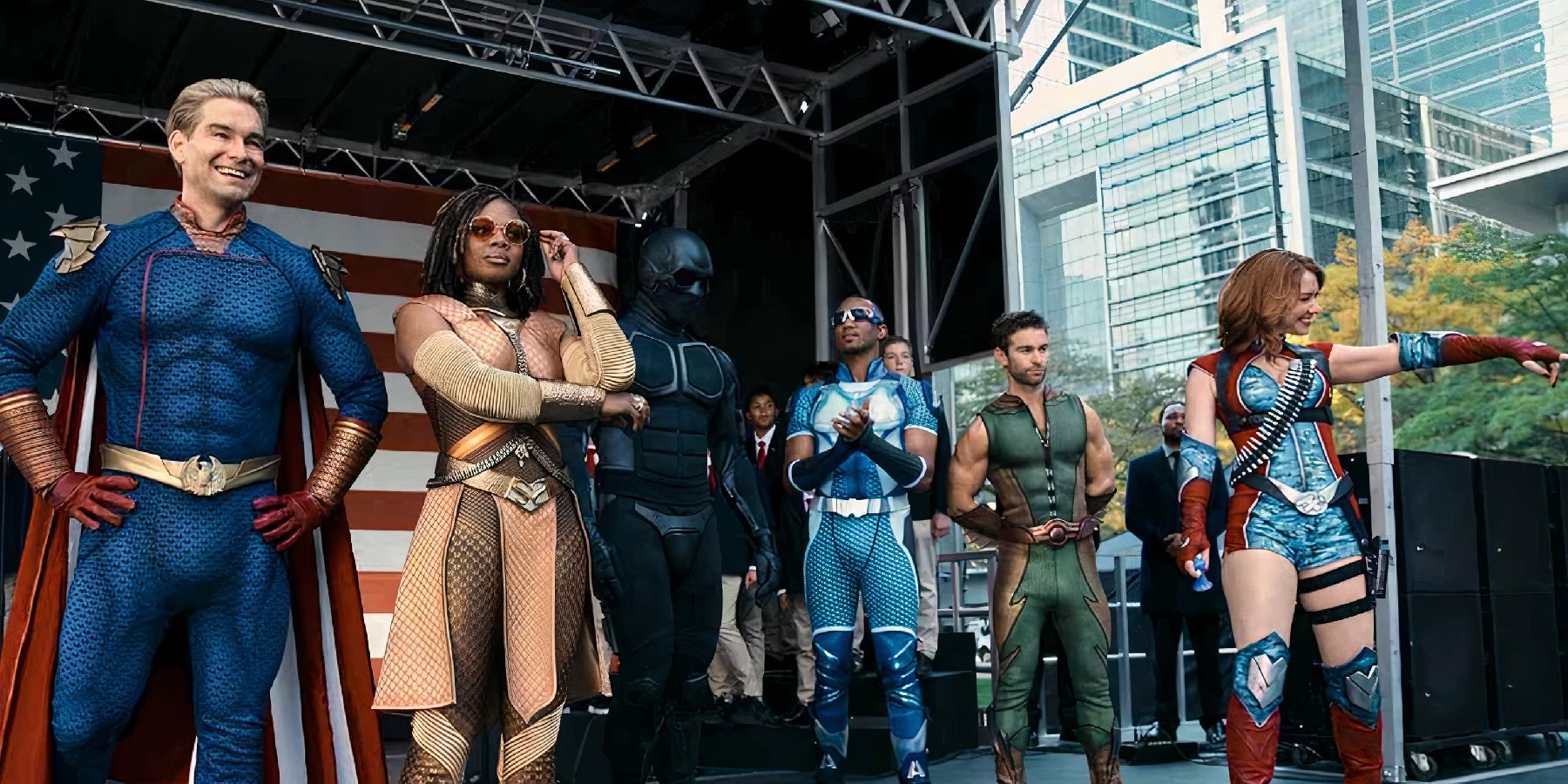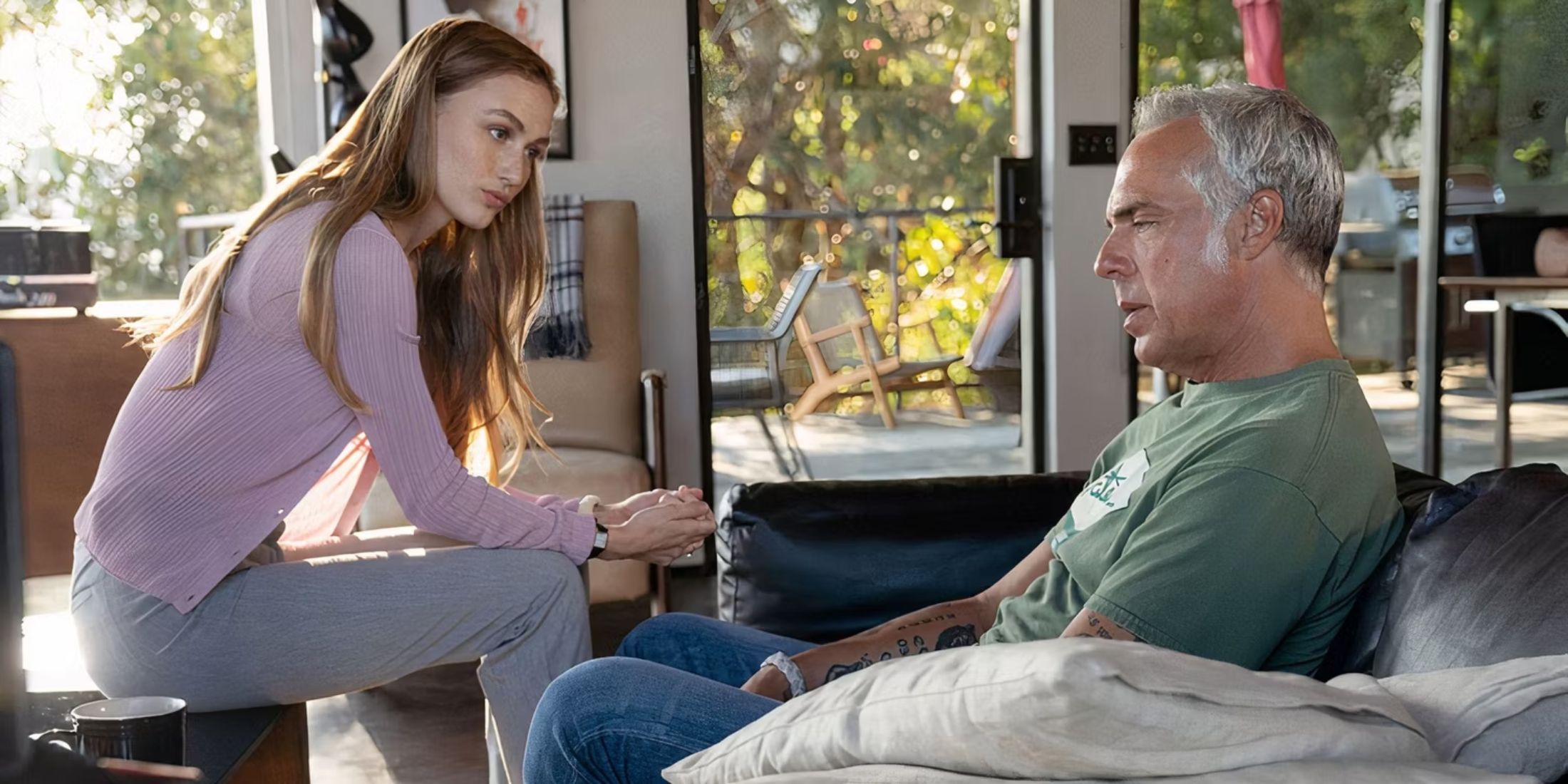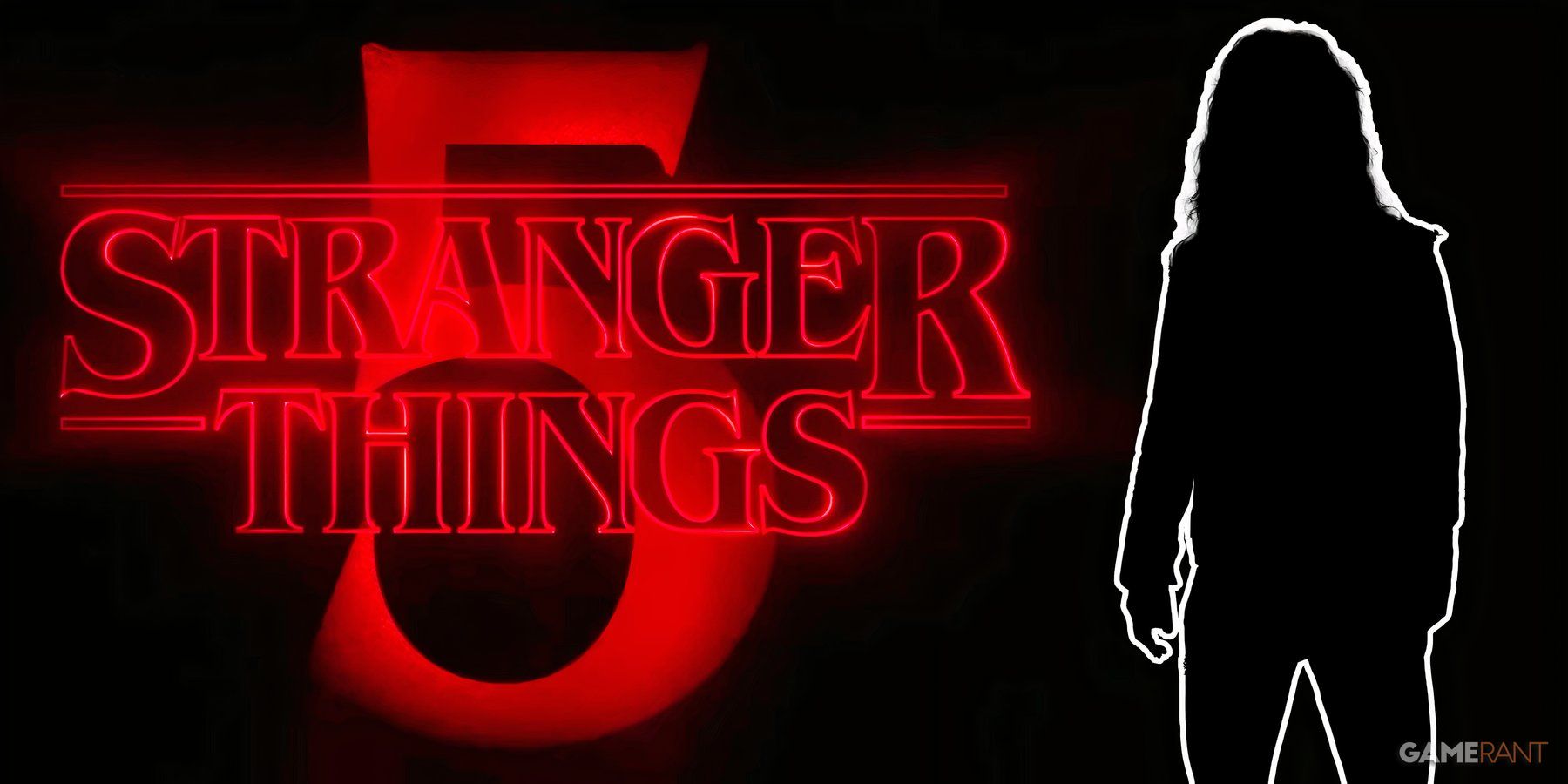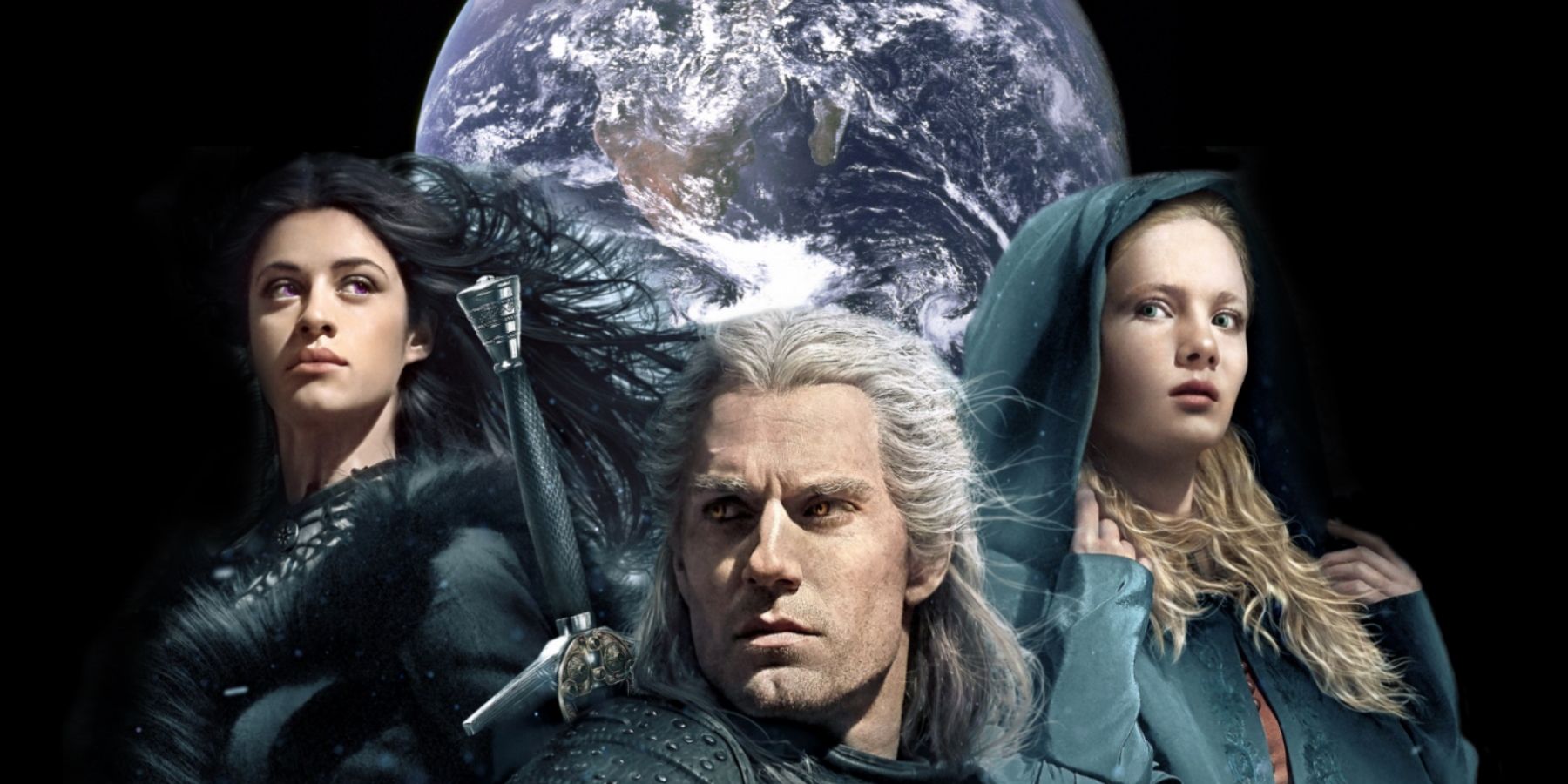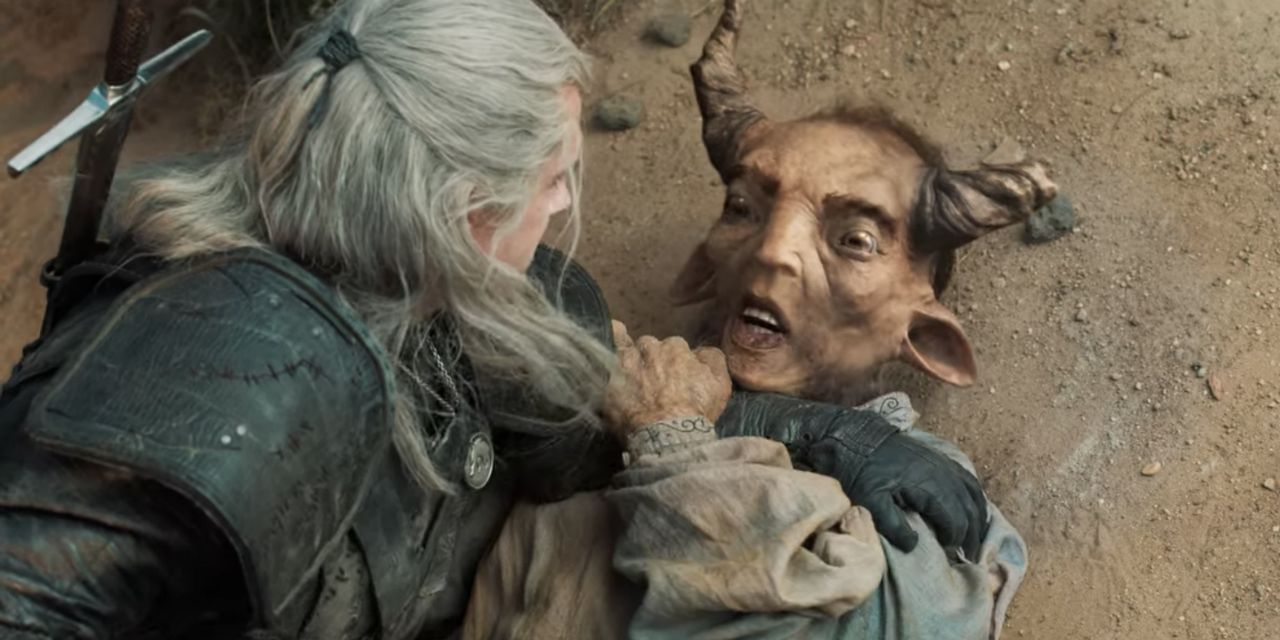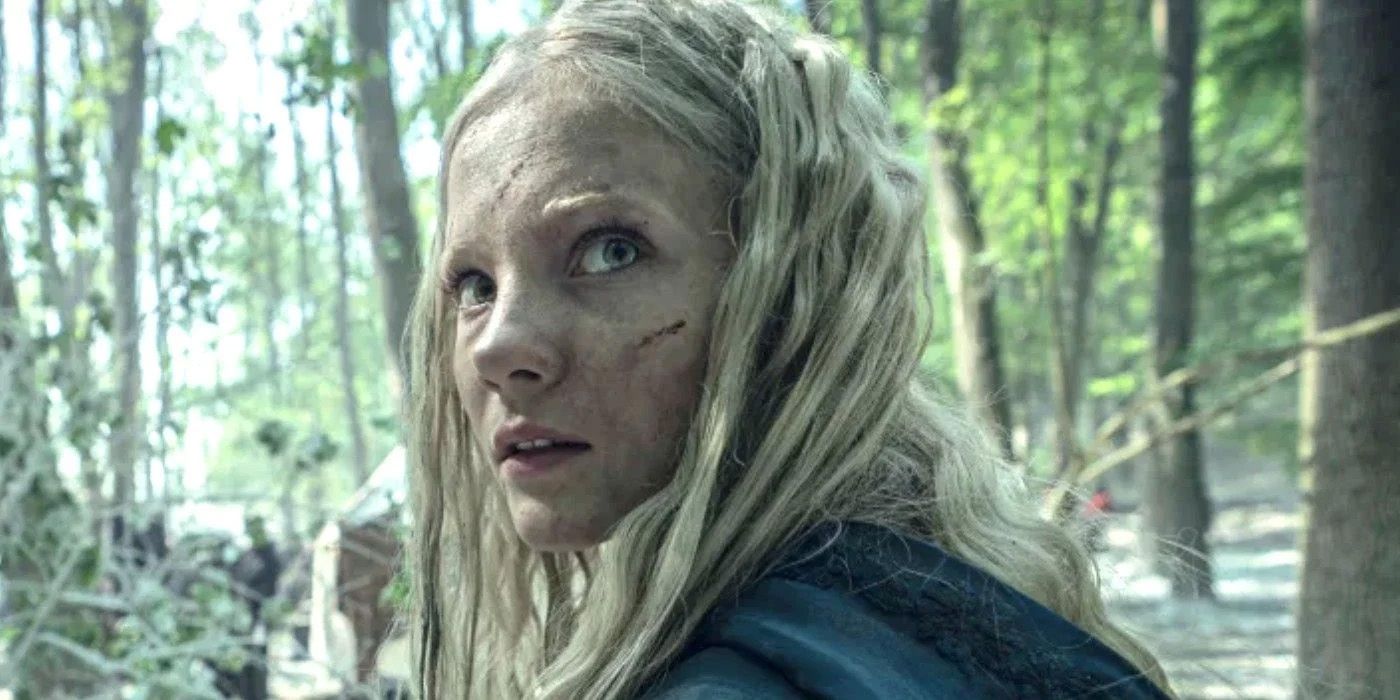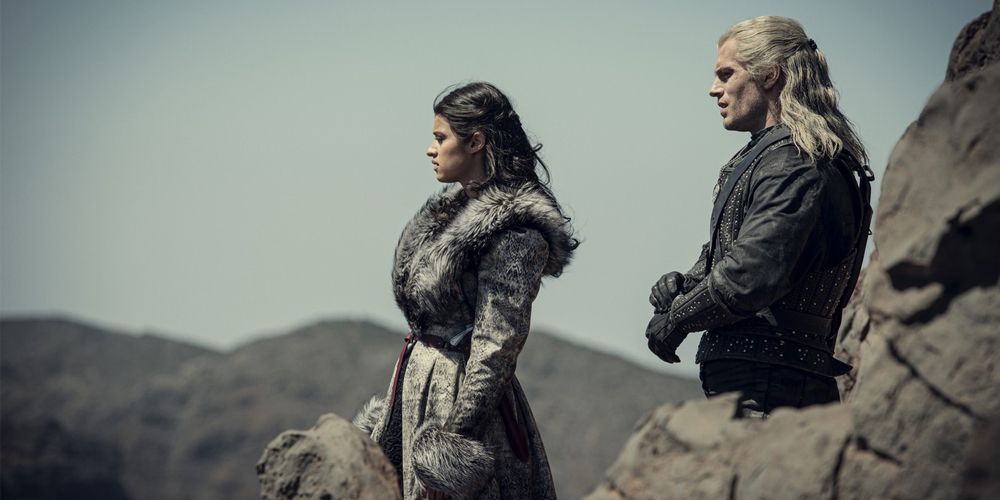CD Projekt Red’s The Witcher trilogy introduced many fans to the franchise, but with the Netflix show adapting the original books, some of the stranger aspects of the setting that the games avoided could be coming back to the forefront. Based on some pictures from behind the scenes of the next season, the Netflix show is about to tackle the Wild Hunt, a group of interdimensional Elven riders from the books who reappeared in The Witcher 3.
With the next series of the show taking on the strange nature of The Witcher’s multiverse, it seems more and more likely that fans will finally see the series visit Earth. A fictionalized version of Earth appears in the original Witcher stories, playing a bizarre and fascinating role rarely touched upon in the games.
The Conjunction Of The Spheres
The Conjunction of the Spheres is the key inciting event of The Witcher’s universe. Around 1500 years before Geralt’s story takes place, the Conjunction saw the multiverse briefly align, with monsters and races from different worlds suddenly trapped in unknown realities, hence the need for witchers to begin with. The world in which The Witcher is set did not have humans until the Conjunction of the Spheres. It was originally inhabited by the Elder Races: gnomes, dwarves, and elves.
The humans that came to inhabit The Witcher’s planet came from a world that was destroyed according to The Witcher's Avallac’h, but they aren’t the only humans in the multiverse. The Witcher is known for its explicit references to myths and fairy tales; many of the beings Geralt encounters are straight out of Northern and Eastern European folklore. In some cases, however, the connections go far beyond influence.
The Lady Of The Lake
At the beginning of the seventh Witcher book, The Lady of the Lake, Ciri has been hopping between dimensions trying to find her way back to her own world. Having travelled through another portal, she finds herself emerging from a lake on an unknown planet, where she is mistaken by the Galahad of Arthurian legend for the Lady of the Lake.
The main events of the book take place in flashbacks, with Ciri explaining to Galahad how she arrived in what becomes apparent is Arthurian Britain. Her story has many parallels with Arthurian mythology as well. When Geralt and Yennefer seem near death at the end, she takes their bodies to Malus Island, located in the original Witcher world’s Lyria and Rivia.
Malus Island is also known as the Isle of Avalon, the island that King Arthur is taken to after he is apparently mortally wounded by Mordred. Both the seventh Witcher book, and many tellings of Arthur’s story, leave the final fates of the people taken to Avalon ambiguous.
In some versions of King Arthur’s story, travelling to Avalon makes Arthur immortal, while in others attempts to revive him fail, and he dies on the island. When Ciri finishes telling her story to Galahad, she suggests that Geralt and Yennefer may have been revived by the magic of Malus Island, but it is implied that this may be a way for Ciri to deal with her grief over the death of her adoptive parents. The story ends with Galahad inviting Ciri back to Camelot to meet King Arthur.
The Witcher games, however, begin with the premise that Geralt and Yennefer were in fact saved in order to continue the story. Similarly, Ciri returns from Earth and there are practically no mentions of Arthurian Britain as a part of the Witcher multiverse in the games. A different version of the Lady of the Lake even appears in The Witcher and again in The Witcher 3: Wild Hunt’s Blood and Wine expansion.
The Witcher's Earth
The Witcher games have a strange relationship with the books — they continue the story, but in order to do so, they also avoid exploring some the stranger implications of the seventh Witcher book, including the existence of Earth in the series’ multiverse. However, the Netflix show is based directly on the books, and though it makes some changes, it seems very likely that if the show goes on long enough it will adapt The Lady of the Lake in all its strange, ambiguous glory.
The Earth of the Witcher multiverse is one that, like most of the realities seen throughout the series, has magic and a smattering of fantastical beings trapped there thanks to the Conjunction of the Spheres. It is implied that dragons used to inhabit the Witcher Earth’s Ireland, for example. Ciri’s time in Arthurian Britain isn’t her only time spent on Earth. At one point, Ciri is travelling through realities and arrives in Pont-Sur-Yonne, a real commune in northern France. She stays in an inn, though unlike her time in Arthurian Britain, she is unable to understand the local language.
This alone has some interesting implications for The Witcher’s universe, perhaps suggesting that the main language spoken by Geralt and Ciri is closely related to the language spoken in Arthurian Britain thanks to the Conjunction of the Spheres. The confirmed existence of both France and Toussaint, a Duchy in the Witcher world clearly based on France during the Age of Chivalry, perhaps implies that the humans who settled Toussaint came from the actual France — or at least, the France of the Witcher’s fictionalized Earth.
It’s never quite made clear whether Earth is actually the original human homeworld. That world’s apparent destruction suggests not, but Ciri also visits Earth at multiple points in its history, which complicates things. As well as France and Arthurian Britain, Ciri sees the Teutonic Crusades, and accidentally brings the Black Death from Europe back to her world, where it became known as the Red Death and the Catriona Plague.
It could be fascinating for the show to embrace the times Ciri visits Earth in all their weirdness. It will likely come as a shock to fans who are only familiar with the games. With The Witcher’s multiverse being one of the most unique aspects of its setting, it could solidify the Netflix version of The Witcher's reputation as one of the more experimental fantasy stories streaming today.
The Witcher season 2 premieres on Netflix on December 17, 2021.

